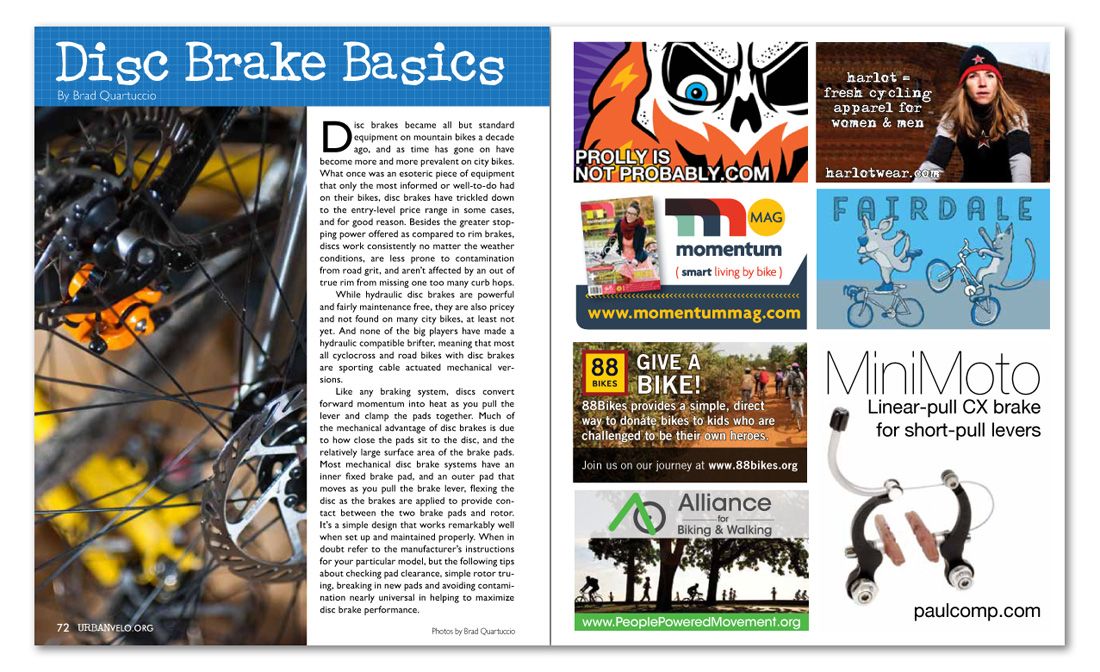


Disc Brake Basics
Brad Quartuccio
Disc brakes became all but standard equipment on mountain bikes a decade ago, and as time has gone on have become more and more prevalent on city bikes. What once was an esoteric piece of equipment that only the most informed or well-to-do had on their bikes, disc brakes have trickled down to the entry-level price range in some cases, and for good reason. Besides the greater stopping power offered as compared to rim brakes, discs work consistently no matter the weather conditions, are less prone to contamination from road grit, and aren’t affected by an out of true rim from missing one too many curb hops.
While hydraulic disc brakes are powerful and fairly maintenance free, they are also pricey and not found on many city bikes, at least not yet. And none of the big players have made a hydraulic compatible brifter, meaning that most all cyclocross and road bikes with disc brakes are sporting cable actuated mechanical versions.
Like any braking system, discs convert forward momentum into heat as you pull the lever and clamp the pads together. Much of the mechanical advantage of disc brakes is due to how close the pads sit to the disc, and the relatively large surface area of the brake pads. Most mechanical disc brake systems have an inner fixed brake pad, and an outer pad that moves as you pull the brake lever, flexing the disc as the brakes are applied to provide contact between the two brake pads and rotor. It’s a simple design that works remarkably well when set up and maintained properly. When in doubt refer to the manufacturer’s instructions for your particular model, but the following tips about checking pad clearance, simple rotor truing, breaking in new pads and avoiding contamination nearly universal in helping to maximize disc brake performance.